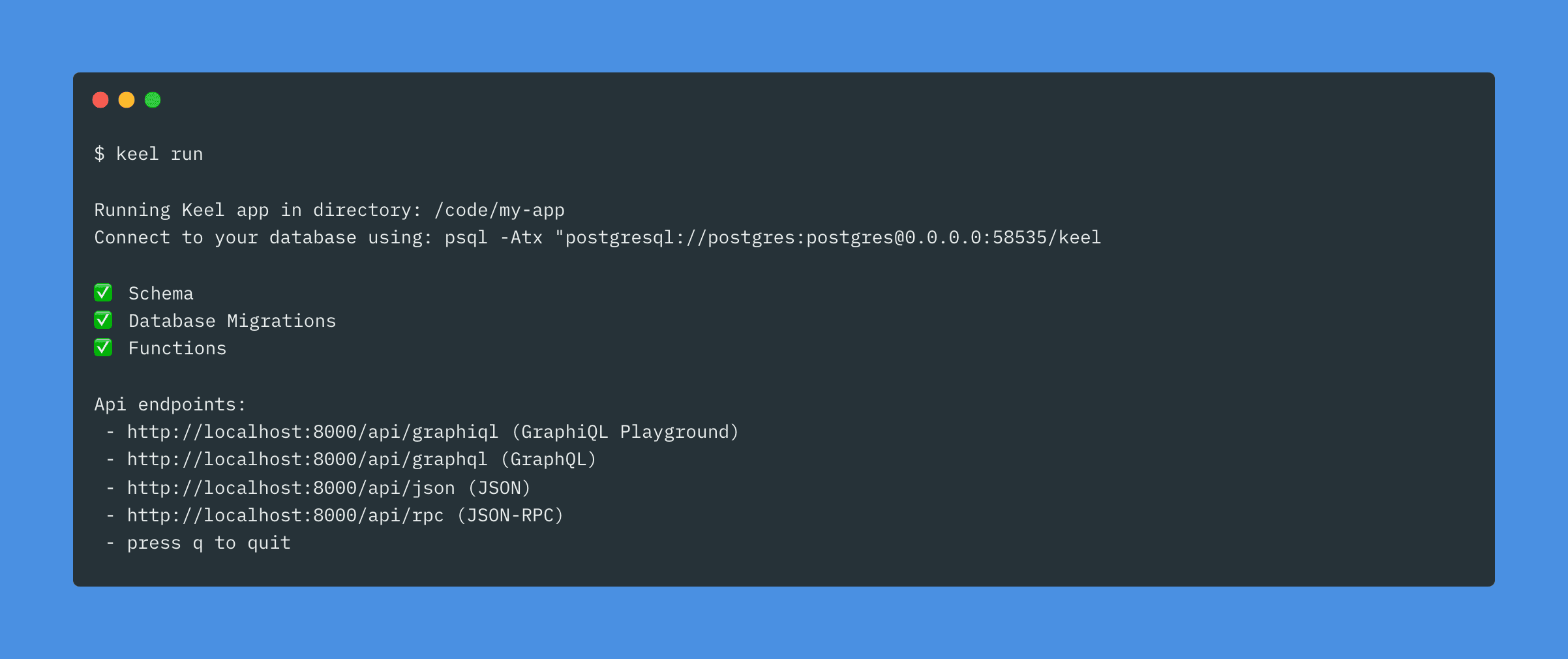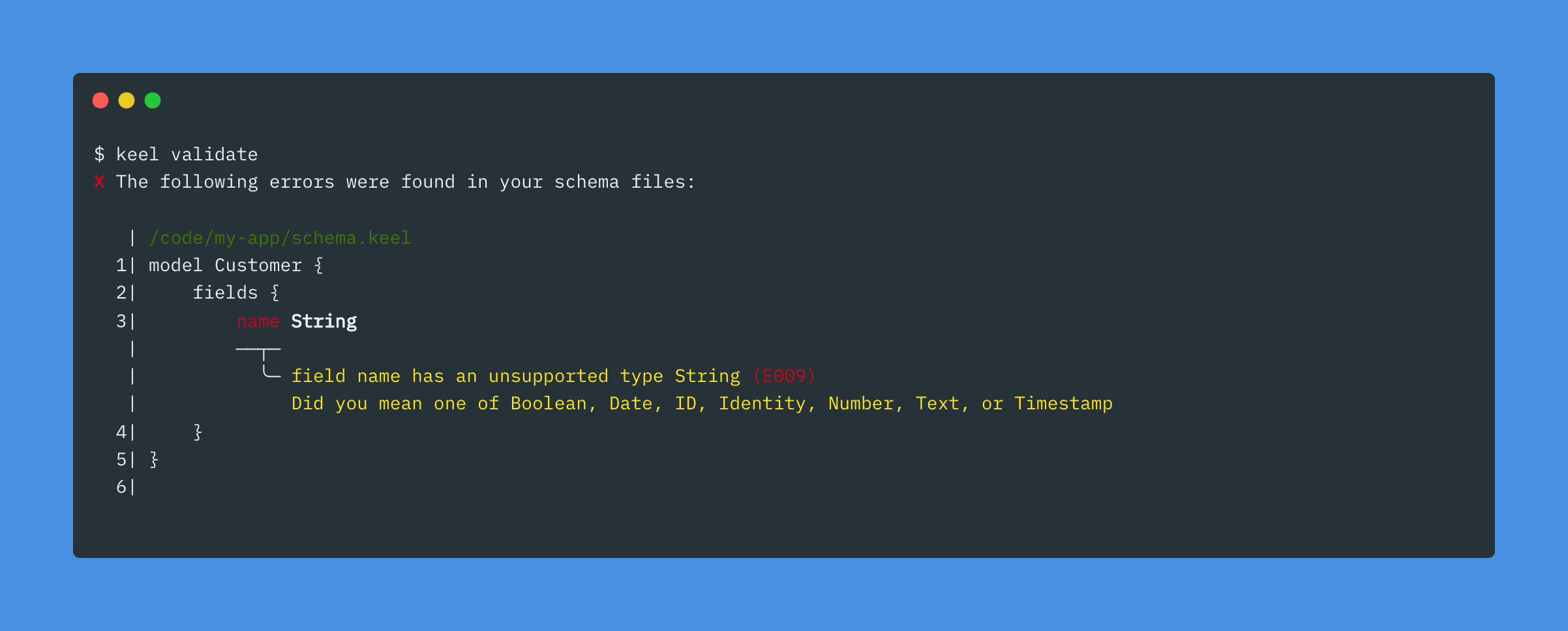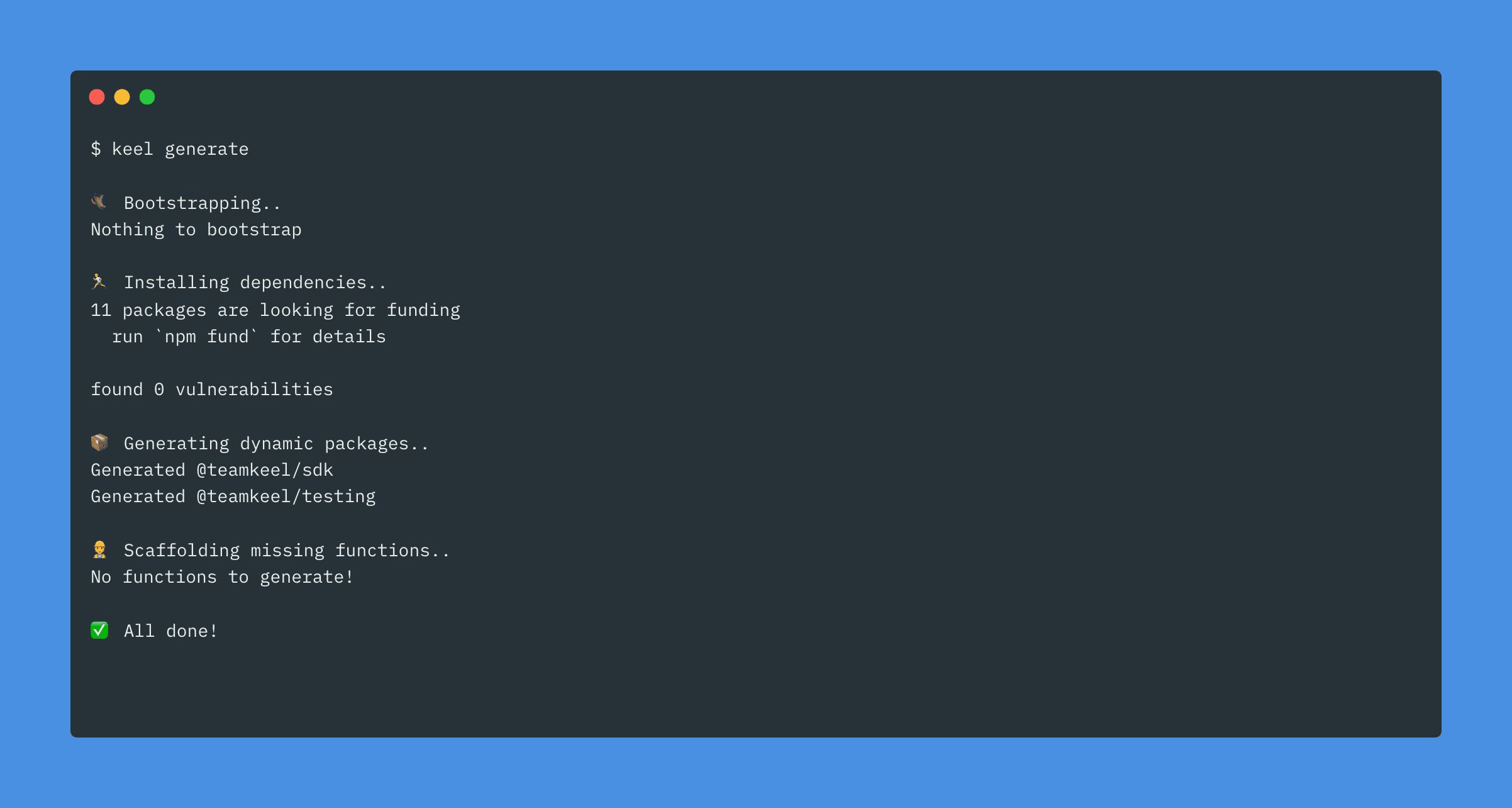CLI
With the Keel CLI you can run your project locally, run tests, validate your schema, and scaffold out new functions. For instructions on how to install the Keel CLI and get your development environment setup see the Local Environment docs.
Installing Keel CLI
The Keel CLI can be installed from NPM:
npm install -g keelRunning your project
From your Keel project directory, use keel run to start a development server for your project.

This command will:
- Set up the database including running any migrations
- Validate your schema
- Setup your functions
- Start a development server
- Watch for any changes to your schema or function files
GraphiQL playground
While the development server is running you can access a GraphiQL playground for your API at http://localhost:8000/api/graphiql.
Resetting the database
If you want to reset your database you can pass the --reset flag to the run command.
$ keel run --resetUsing --reset will delete all your data in your local database.
Running tests
Keel supports writing tests with the Vitest (opens in a new tab) framework. The keel test command runs your tests with a sandboxed database and a development server, so you can write tests against your APIs.
You can learn more about how to write tests in Keel here
Validating
You can validate your Keel project using keel validate which report any schema or function errors.

Generating code
The @teamkeel/sdk package that you use in your functions is generated from your schema files. When running a development server with keel run this package will be re-generated automatically but if you want to manually re-generate it you can use keel generate.
The generate command will also scaffold out any missing function files for you.
